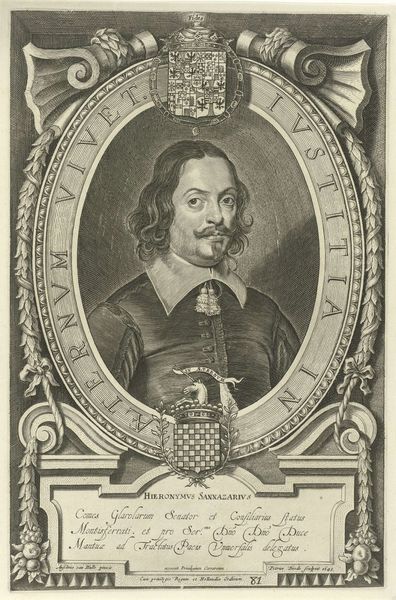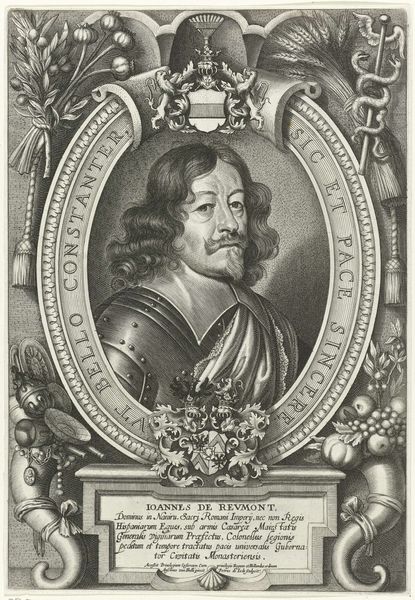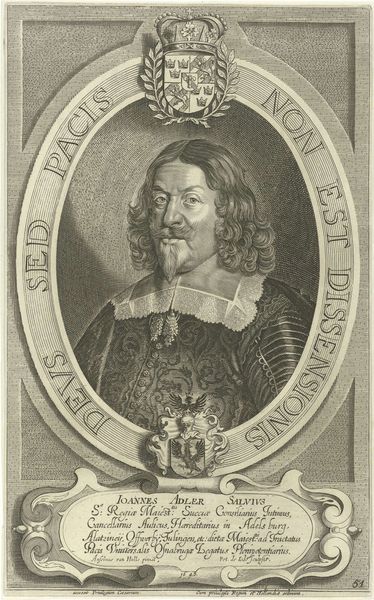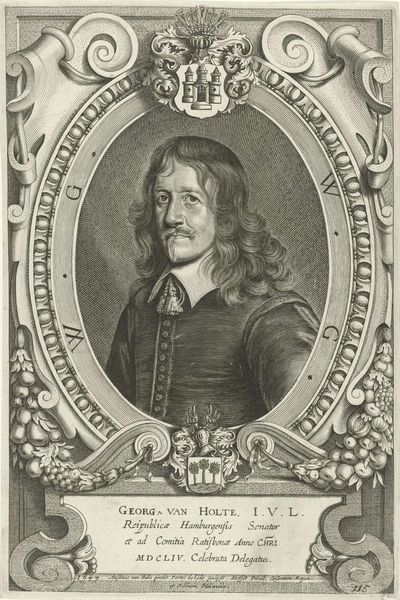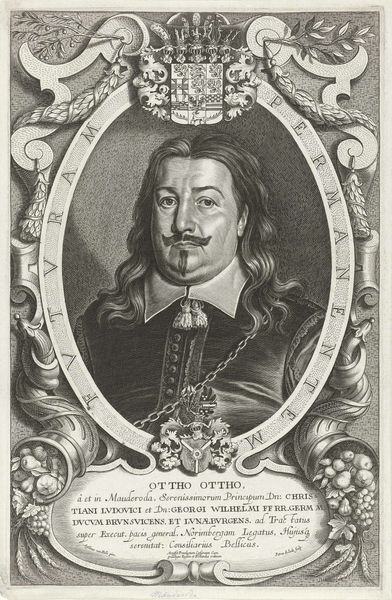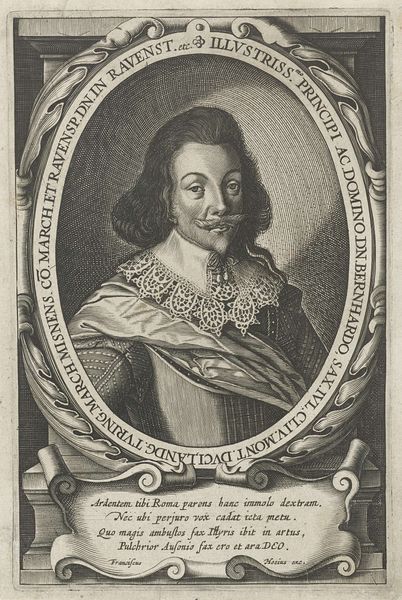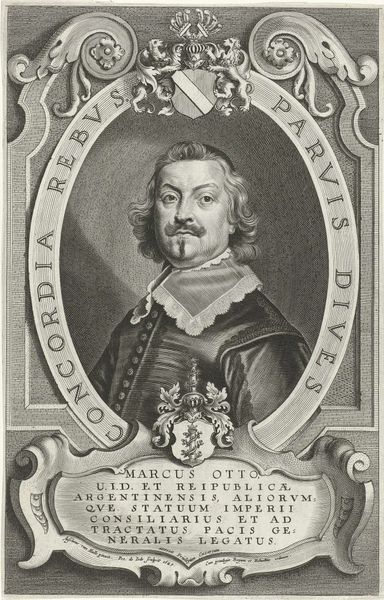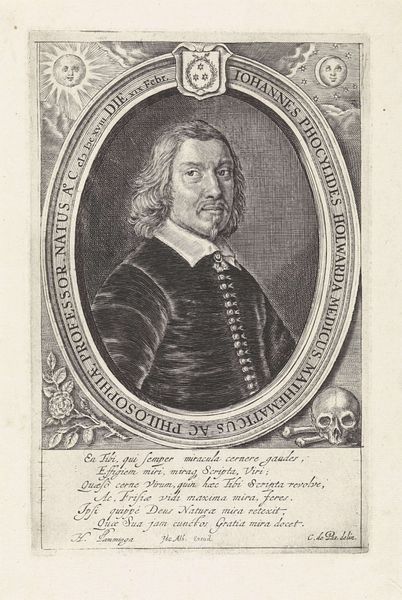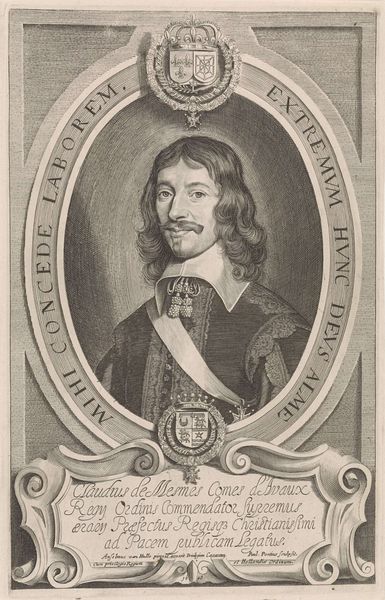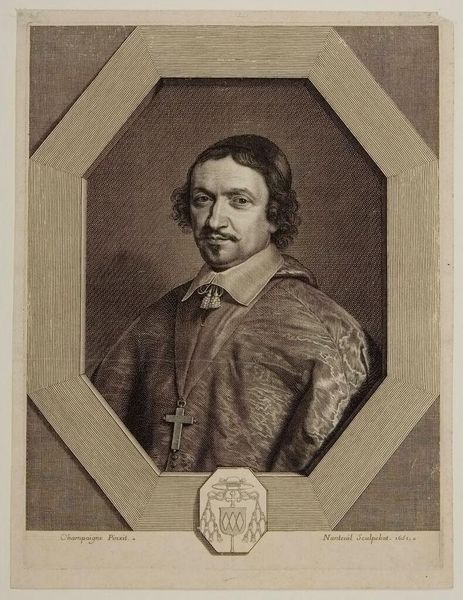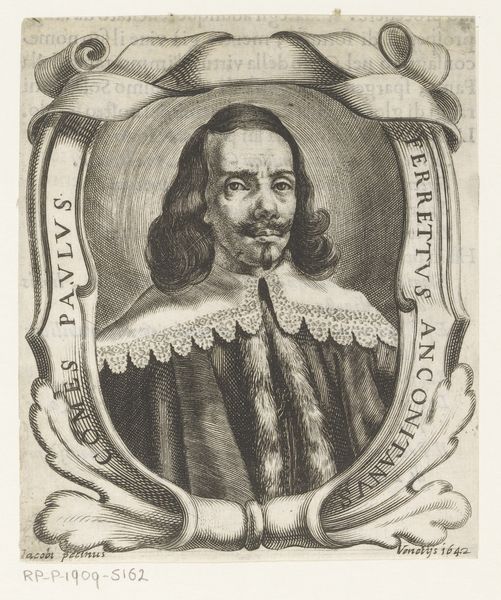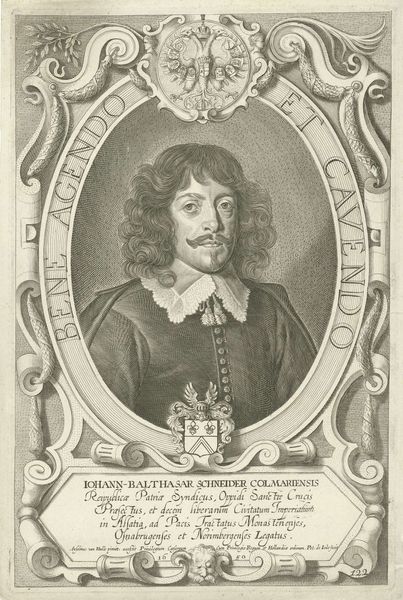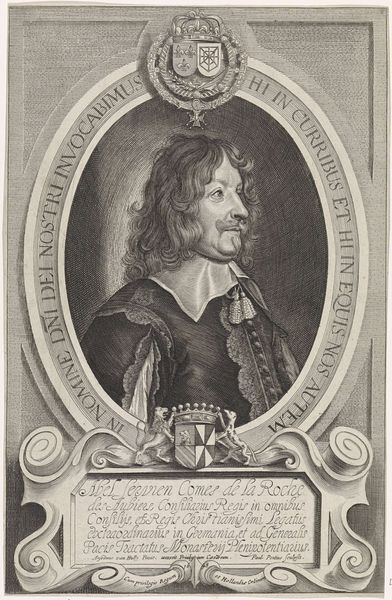
print, metal, engraving
#
portrait
#
baroque
# print
#
metal
#
old engraving style
#
caricature
#
figuration
#
portrait reference
#
line
#
portrait drawing
#
history-painting
#
engraving
Dimensions: height 296 mm, width 190 mm
Copyright: Rijks Museum: Open Domain
Curator: So, this is Pieter de Bailliu's "Portret van Hermannus Mylius von Gnadenfeld" from 1652, housed here at the Rijksmuseum. It's quite striking, isn't it? Editor: It really is. The detail achieved through engraving is amazing. I am fascinated by how such intricate details, especially on metal, contribute to its overall baroque feel. How did the choice of metal and the engraving process affect the creation and consumption of art during this time? Curator: Precisely! Consider the socio-economic implications. Engravings, especially on metal, allowed for reproduction, democratizing images to a certain extent. It’s no longer a unique painting commissioned by the elite. Now, the emerging middle class could participate in visual culture, albeit through a mediated form. Think about the labor involved. Engraving was a skilled craft, a trade. The value wasn't solely in the image, but in the craftsman's skill and the production process itself. What do you think that tells us about artistic value at the time? Editor: It makes me think about accessibility. While a painted portrait was exclusive, engravings allowed wider circulation. Was there perhaps a shift in the perception of art – from a precious object to a commodity, influenced by the ease of its reproduction? Curator: Absolutely. It’s about expanding access, and therefore influencing how images function within society. Consider the consumption of images – no longer solely for aesthetic appreciation but potentially as tools for political messaging, social commentary, or even simple decoration within a broader consumer culture. How would that expanded access impact the cultural influence and perceived importance of artwork? Editor: I guess it elevates its cultural role, right? What's really hitting me now is how something that seems purely aesthetic is actually deeply interwoven with economics and class. Thank you. Curator: Exactly. The materiality isn’t just about the final product. It's about the means of production, distribution, and the impact on the societal landscape. It's something to keep in mind when experiencing any work.
Comments
No comments
Be the first to comment and join the conversation on the ultimate creative platform.
